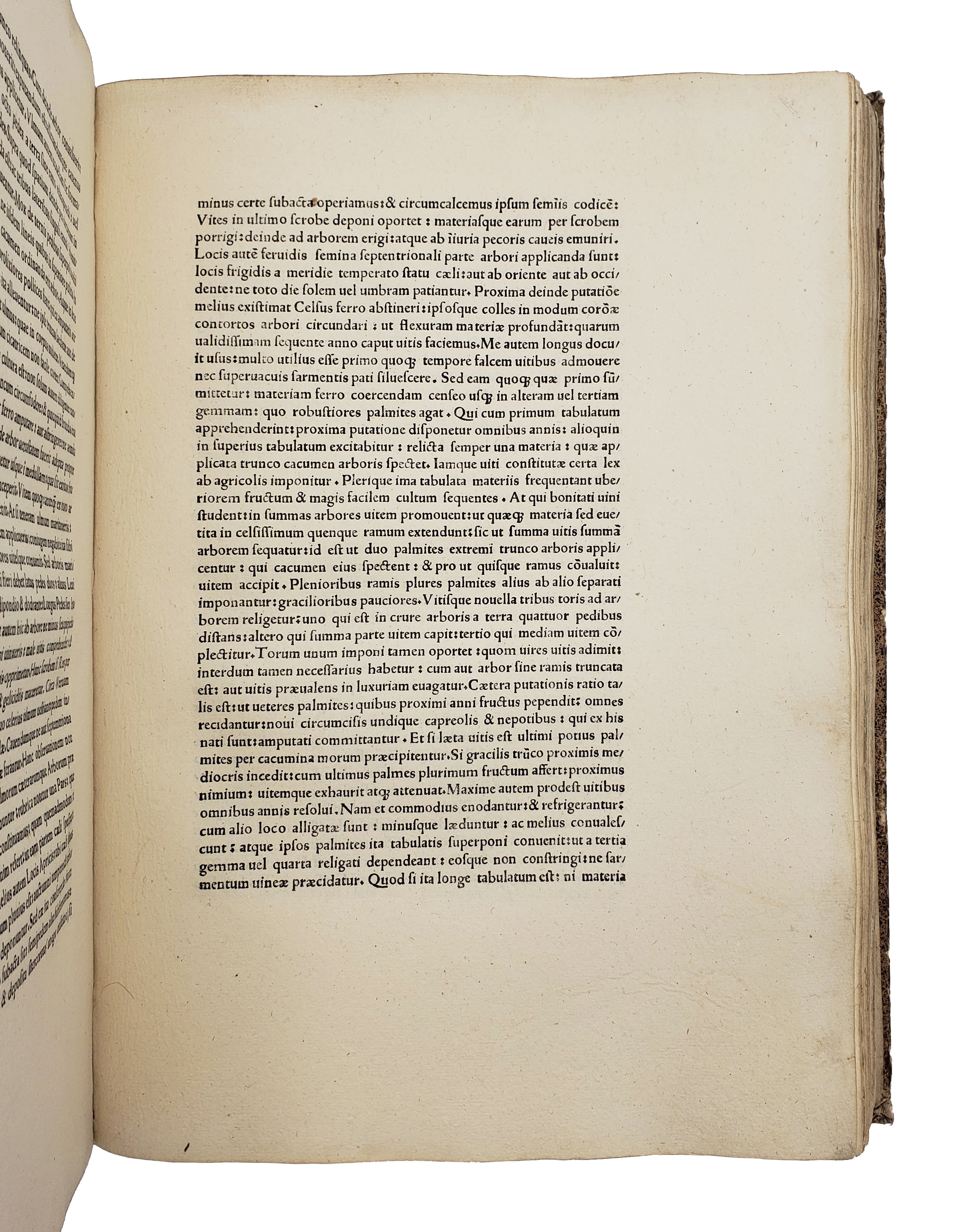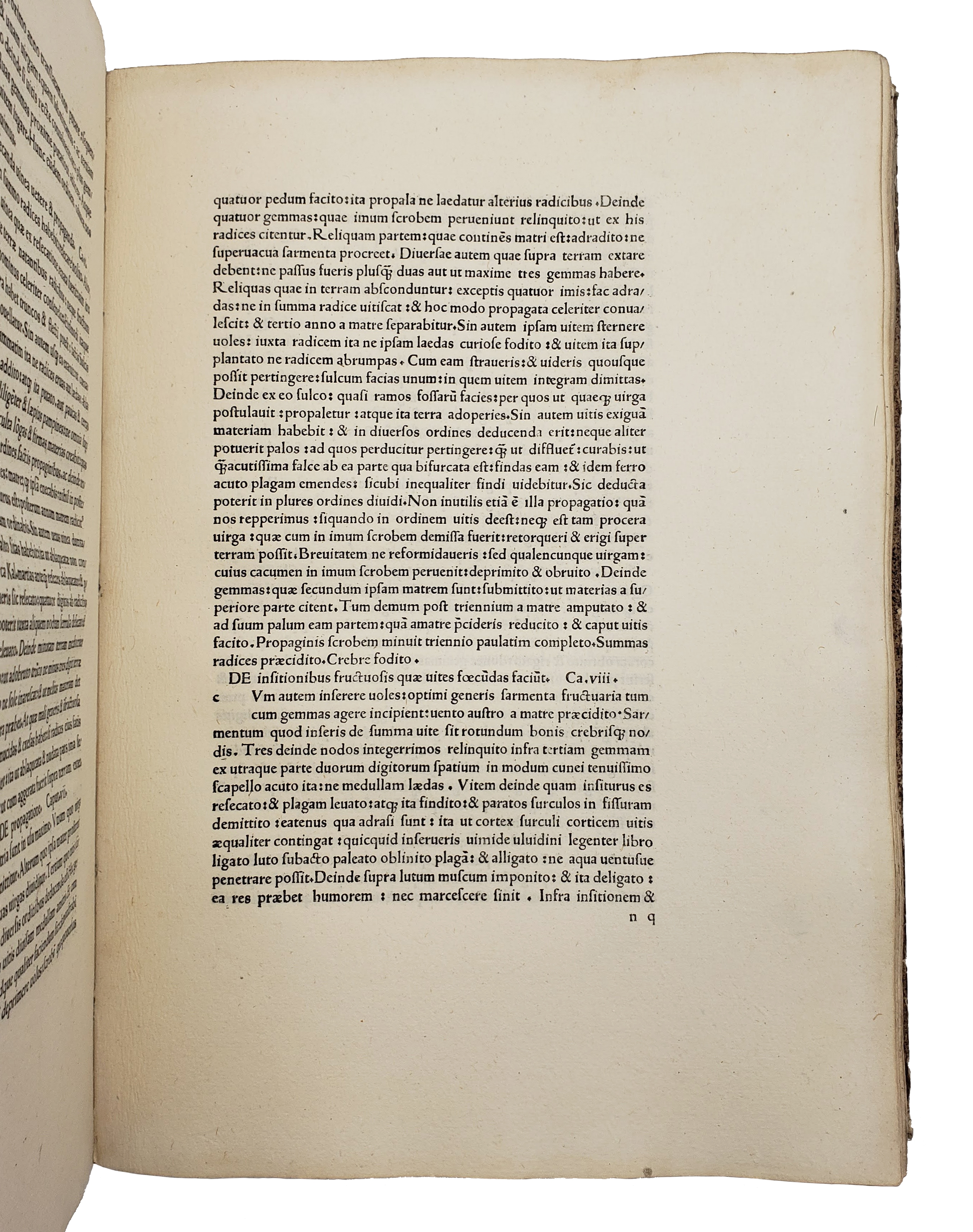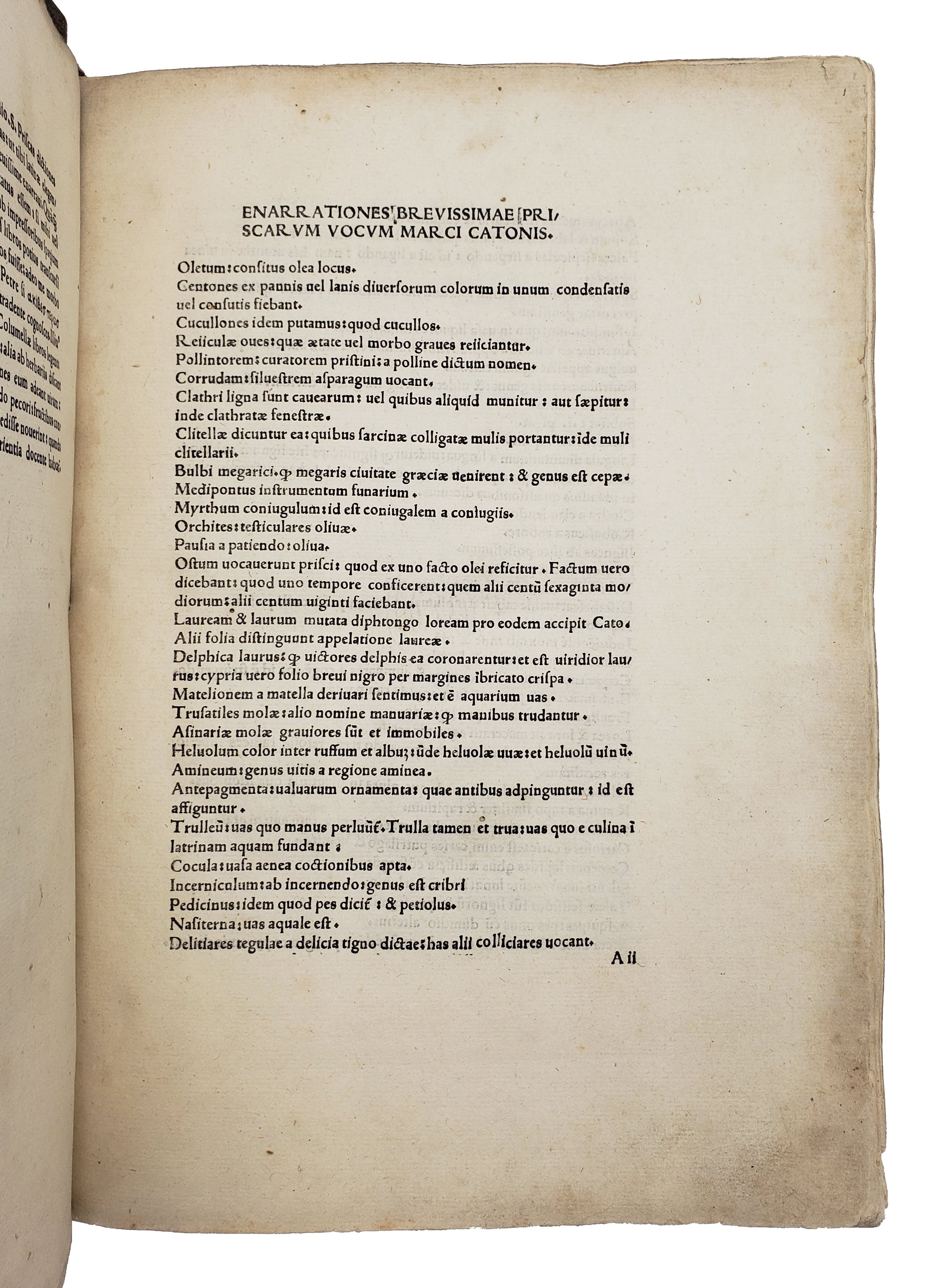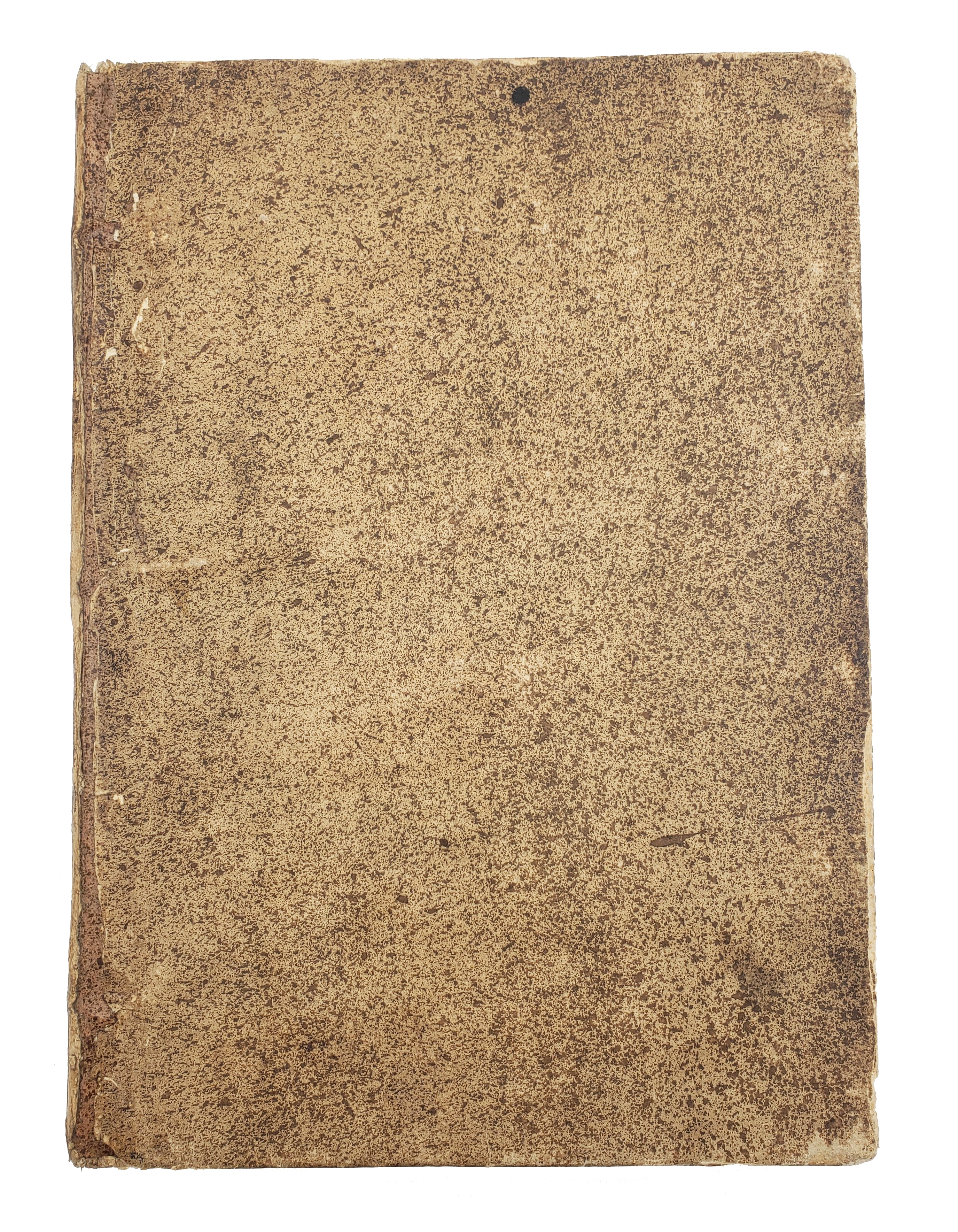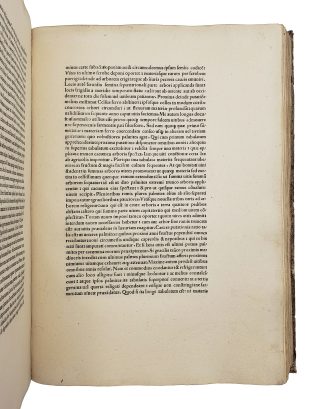CATO, Marcus Porcius, VARRO, Marcus Terentius, COLUMELLA, Junius Moderatus, PALLADIUS, Rutilius Taurus
HANDSOME INCUNABULUM – SCARCE IMPRINT
De re rustica
Reggio Emilia, Bartholomaeus de Bruschis, Bottonus, 5 June 1482£15,000.00
Folio. 4 parts in 1, with continuous pagination. 310 unnumbered ll., A6 a8 b-c10 d8 e-g10 i8 K10 (K1 blank) L10 m-s8 &8 8 8 2a8 2b12 (2b1 blank) 2c-2d8 2e-2h10 [chi]2(-2), lacking final blanks. Roman letter, little Greek. 8- and 3-line initials, chapter headings on b6-7 and 2-line initials on 2c2-3 all supplied in red. Lower outer edge of some ll. slightly worn, very slight water stain at gutter of final ll., occasional minor spotting or finger-soiling to outer upper blank margin, printer’s smudge to upper outer blank corner of C9, small worm holes at gutter of 2c8-2h10, outer margin of penultimate and last leaf repaired with traces of glue, blank recto of first and verso of last very slightly soiled. A handsome, well-margined copy, on thick paper, in marbled boards c1800, edges and joints worn, ancient paper labels to spine. Bookplate and shelfmark of Biblioteca Terzi to front pastedown, stamps of Lawes Agricultural Trust to front and rear pastedowns, slightly later ex-libris ‘Petri Matthei Plebani Canonici Ecclesiae (?) Bergomi h 68 9’ to foot of last, occasional C16 annotations in red and black-brown ink.
Bel exemplaire de cette édition, extrêmement rare’ (‘Catalogue des livres…de la bibliothèque de feu M. le marquis De Terzi’, this copy, 1861, lot 195). The earliest recorded private owner of this copy was a priest in Bergamo, and the last the Bergamese Marquis de Terzi. It was the second edition issued in northern Italy, and one of only three works printed by the de Bruschis—the first printers in Reggio Emilia. ‘This is a good example of the rivalry between the prototypographers, five Italian incunabula of the “Scriptores rei rusticae”, by five different printers, in three cities; three editions by three different printers in one of them, Reggio Emilia […] After that the tradition of the four “Scriptores” was common’ (Sarton, ‘Hellenistic Science and Culture’, 388). This florilegium of agricultural works was devised for a readership interested in the classical rustic virtues of landownership and the practical aspects of country life, with topics as varied as the best place to set up a beehive, horticulture, remedies for dogs with flees and sick horses, ways to scare snakes off stables and regulations for workers. Marcus Porcius Cato (234-149 BC) was a Roman statesman, military officer and author. His only complete, extant work, ‘De Agri Cultura’ (c.160 BC) is a manual on the management of a country estate reliant on slaves, with a special interest in the cultivation of vines. A prolific writer patronised by Augustus, Marcus Terentius Varro (116-107BC) based his ‘Rerum rusticarum libri tres’ on his direct experience of farming. He notably warns his readers to avoid marshlands, where ‘animalia minuta’ that cannot be seen by the human eye may be breathed in or swallowed and cause illnesses. A soldier and farmer, Lucius Moderatus Columella (4-70AD) is best known for his ‘Res rustica’—in this edition with a commentary by Pomponius Laetus—which deals with a wealth of activities including the cultivation of vines and olives, the farming and treatment of animals, and the management of workers. Inspired by Columella and much admired in the medieval period, Palladius’s (C4-5AD) ‘Opus agriculturae’ (or ‘De re rustica’) provides an account of the typical monthly activities of a Roman farm, and mentions the utility of building mills over abundant waterways to grind wheat. A well-margined copy with very practical marginalia—highlighting sections on castrating chickens—suggesting a landowner’s everyday use.
Boston PL, Harvard, LC, Michigan State, Huntington, Newberry and Walters Art Museum copies recorded in the US.BMC VII 1086; Goff S347; HC 14565*; GW M41059. Not in Simon or Oberlé. Catalogue des livres rares et précieux provenant de la bibliothèque de feu M. le marquis De Terzi de Bergame (Paris, 1861); G. Sarton, Hellenistic Science and Culture in the Last Three Centuries B.C. (Cambridge, MA, 1959).In stock


